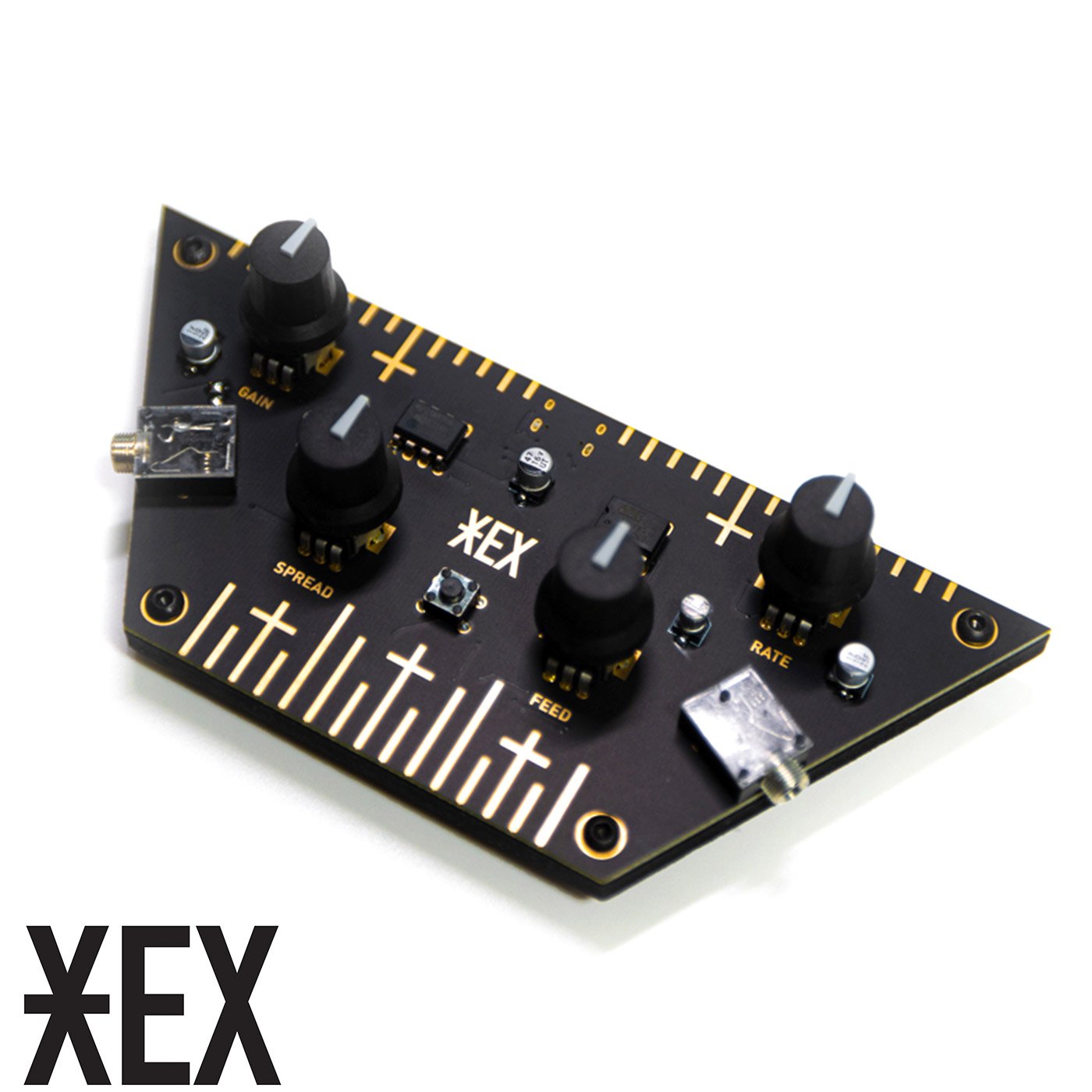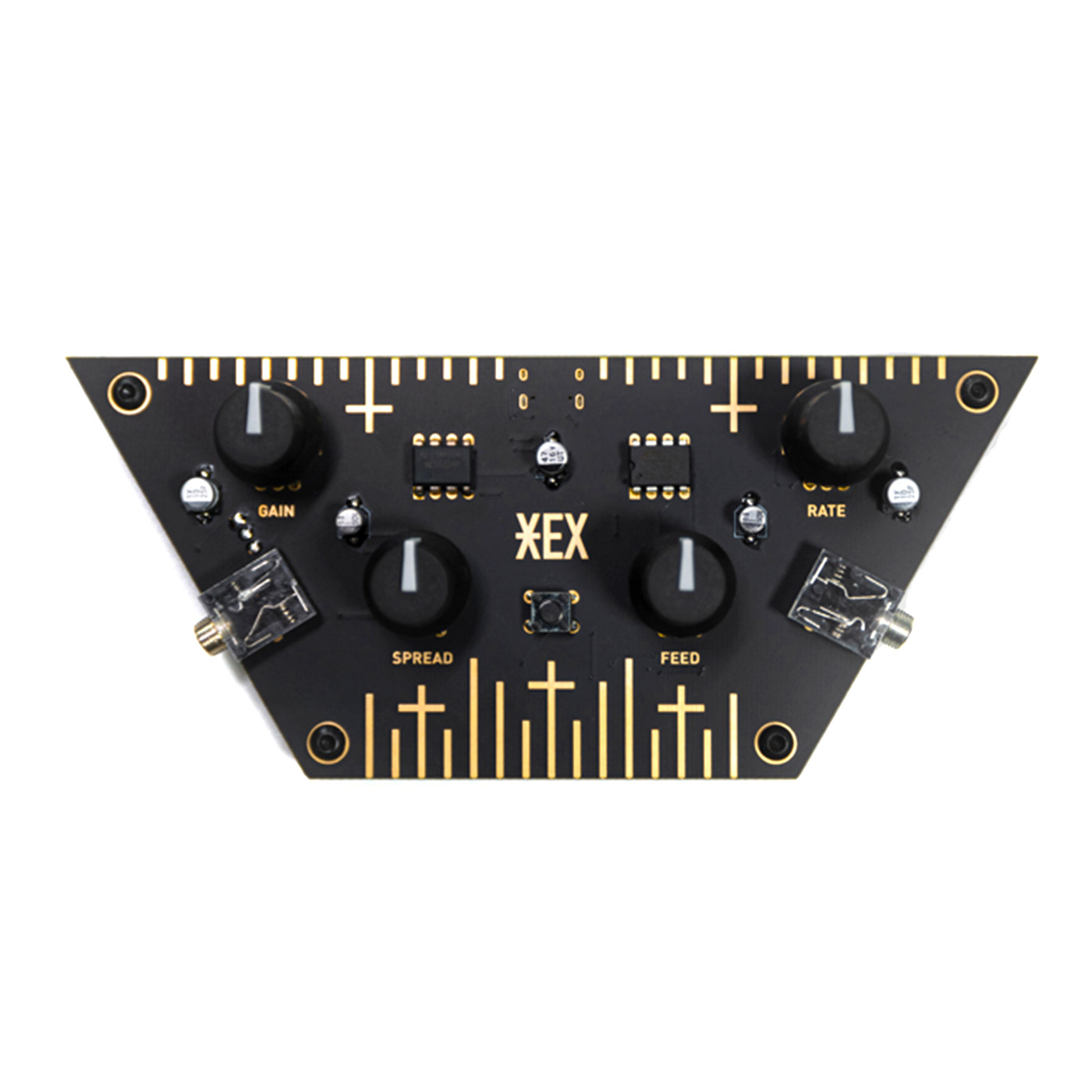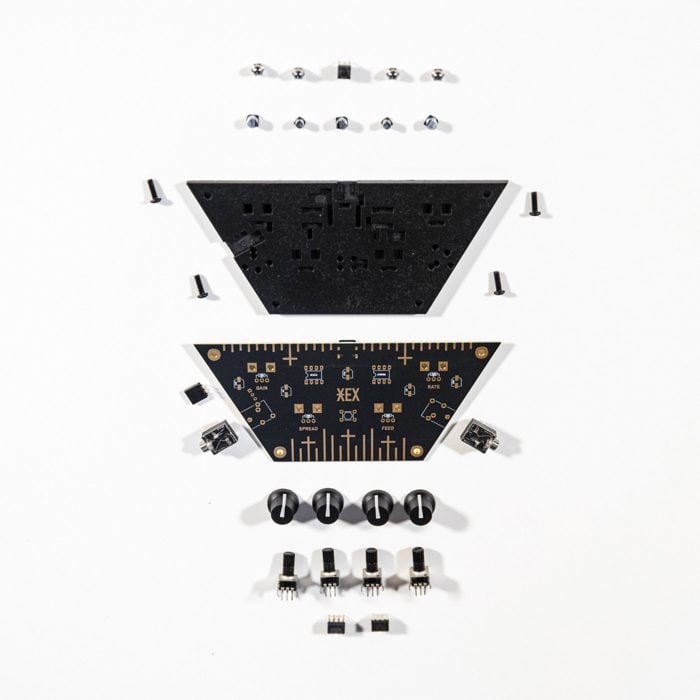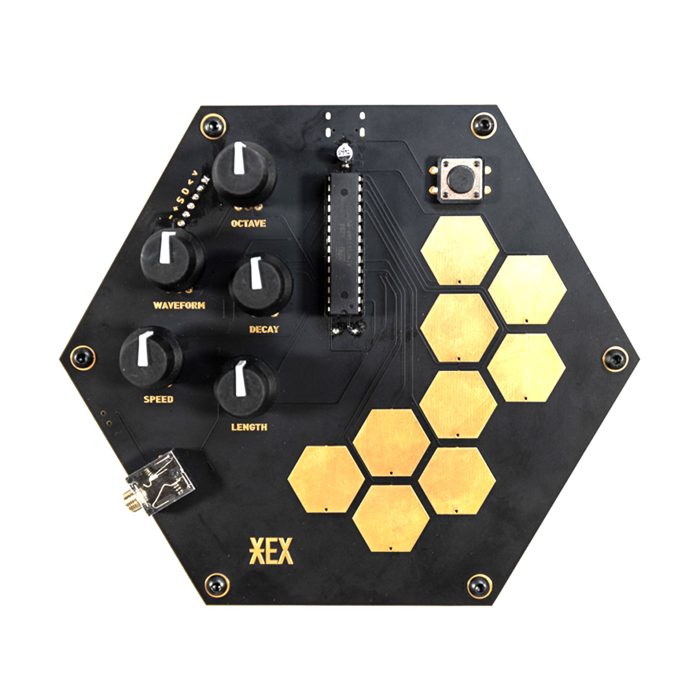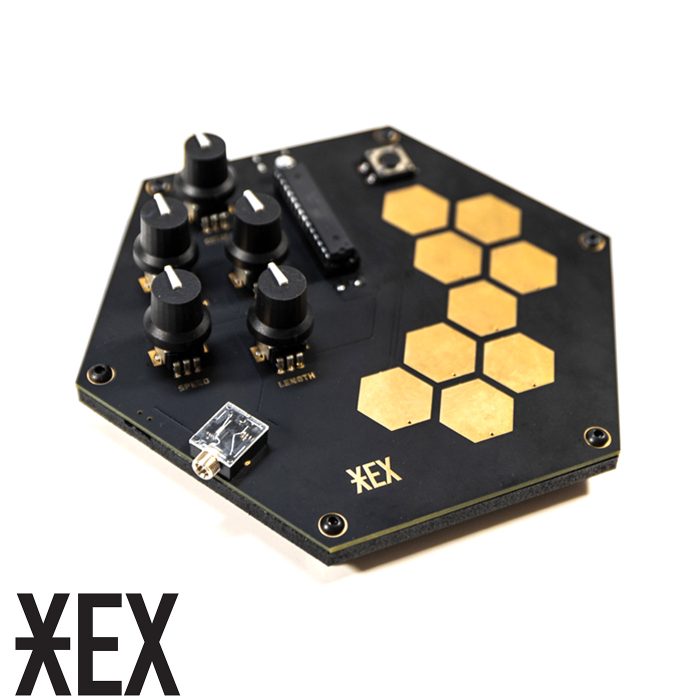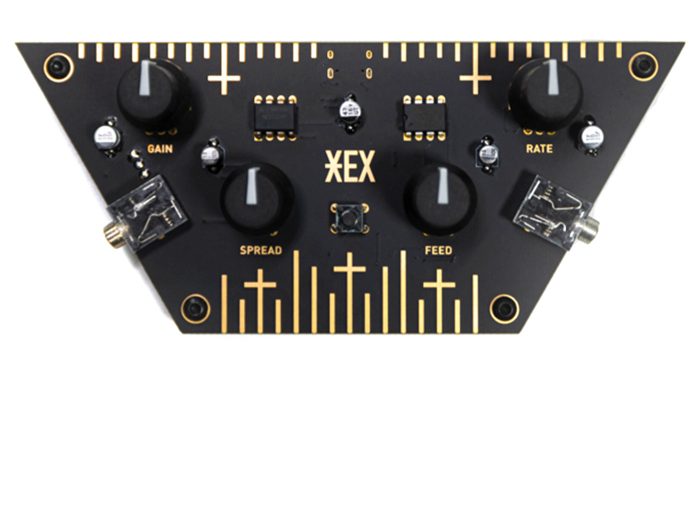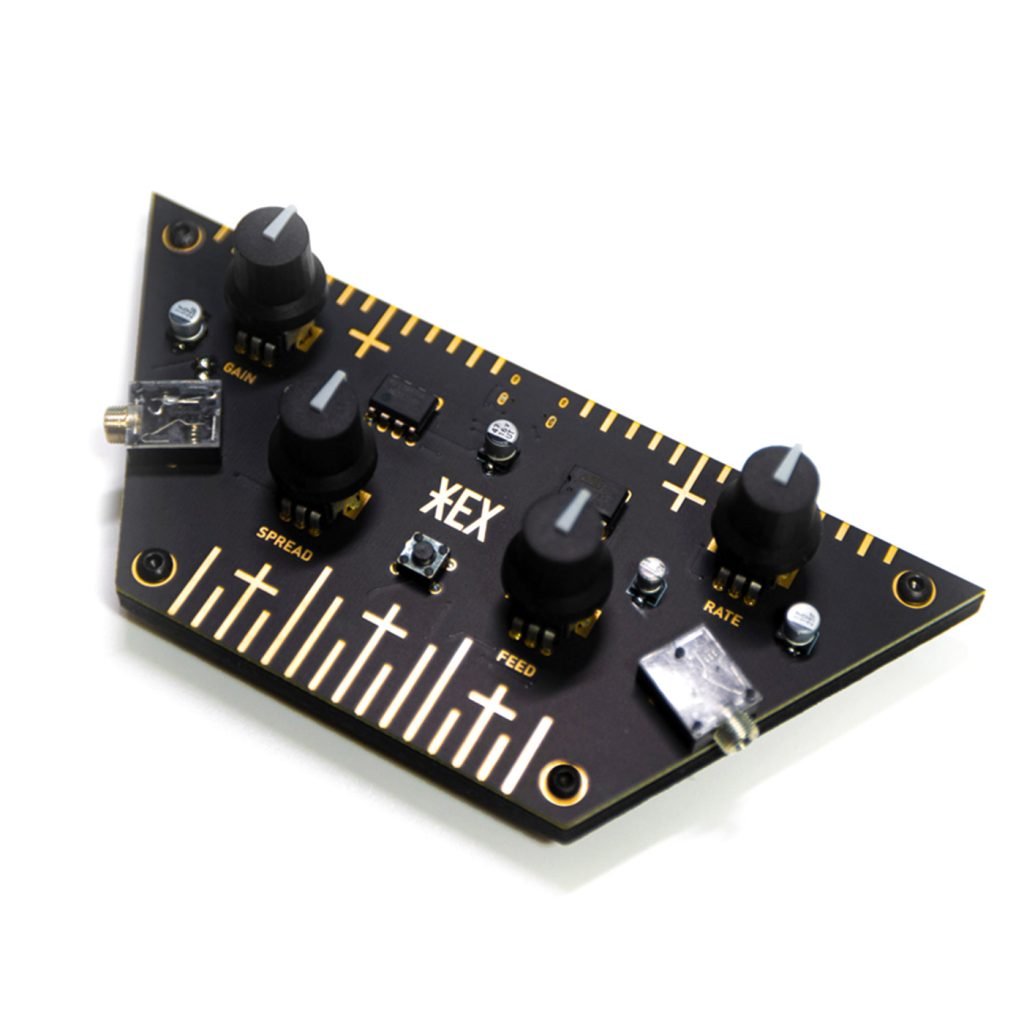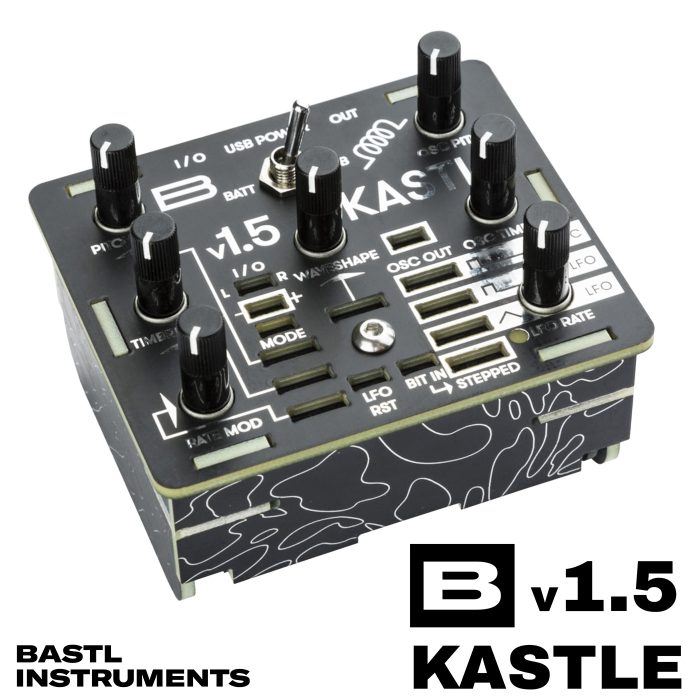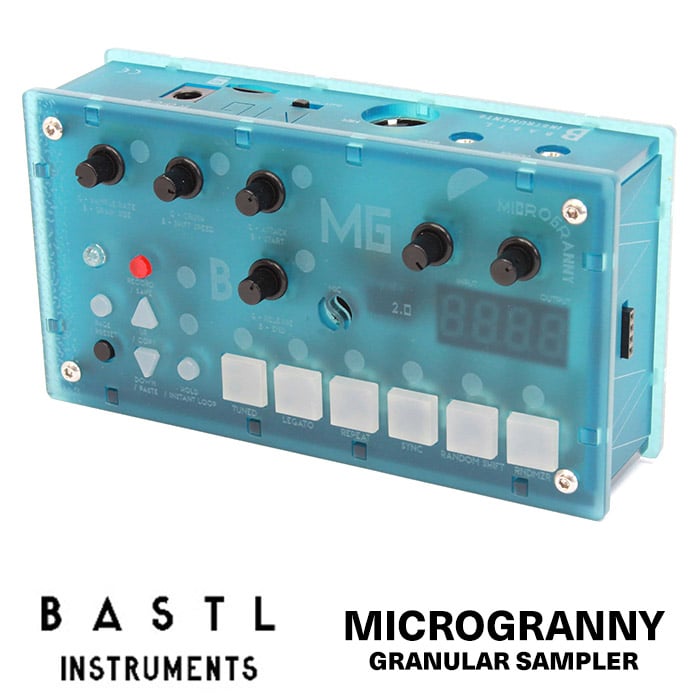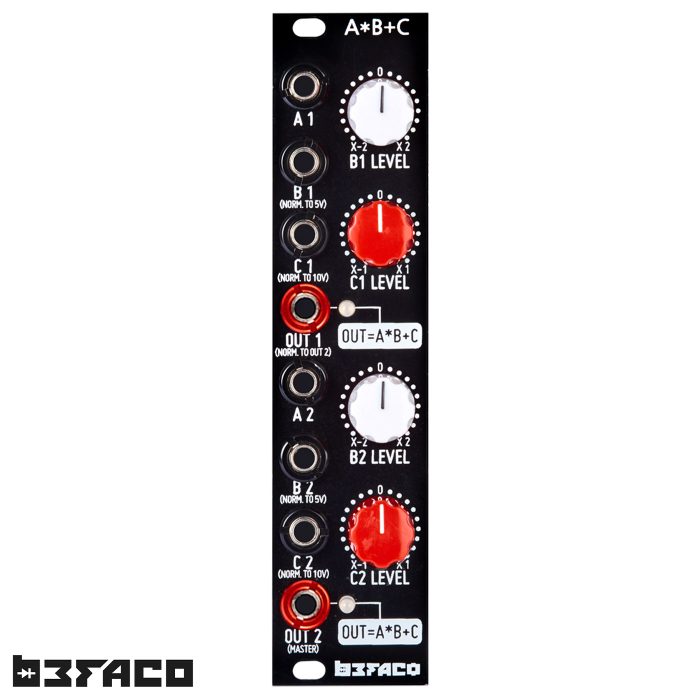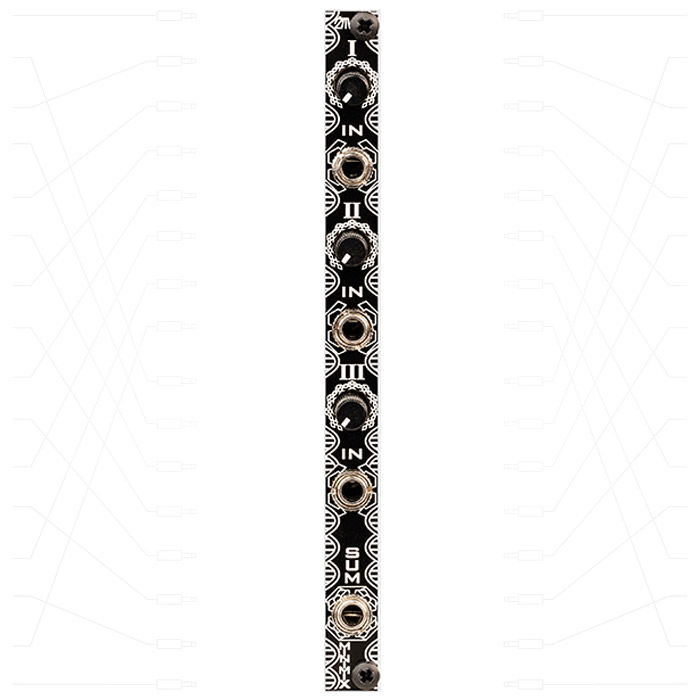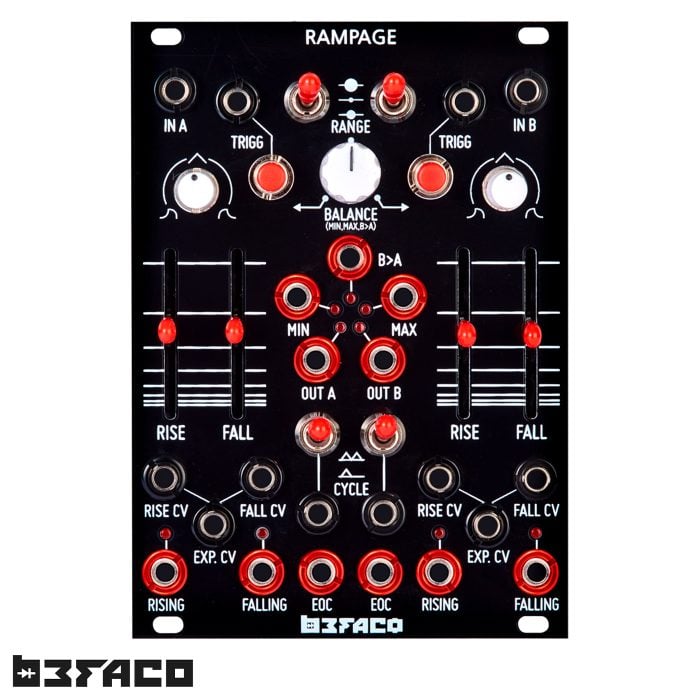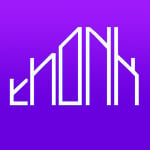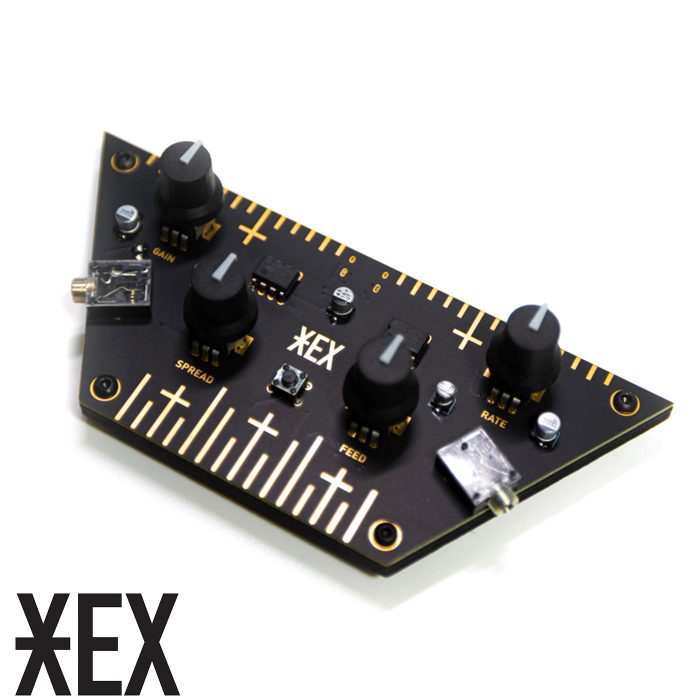Description
Hex lag is a digital sound processing instrument with signal modulating potentiometers and an interactive tactile surface for direct sound control. It digitally simulates analogue bucket brigade delay chips (typical of chorus, flanger and karplus-strong), but also enables pitch-shifting, downsampling, etc.
Lag is a real-time sound processing device. The signal sent through the left jack input, goes through the GAIN stage and is fed into the circular buffer delay line.
There are four potentiometers dedicated to sound manipulation. GAIN, RATE, SPREAD and FEED settings can be adjusted to turn your sounds into thick drones, bit crushed chaos, pitch shifted copies, junglist stutter, etc. RATE controls the sampling speed and overall delay time, while SPREAD is used to adjust the separation between the read & write “tape heads” within the circular buffer. The FEED potentiometer can also push the device to self-oscillation mode, enabling standalone usage.
Touch the golden touch pads to additionally manipulate the DELAY and SPREAD parameters for manual vibrato-like effects and expressive sound design.
Push button can be used to achieve the freeze/stutter effect. The stereo output jack outputs two versions of the signal – 50% and 100% wet.
SECONDARY MODE
Lag also has a pitch-shifter mode which can be accessed by turning the SPREAD potentiometer fully clockwise and pressing the push button. In this setting, RATE controls the sampling speed and SPREAD adjusts the pitch-shifting frequency. FEED still controls the feedback, producing granular-like pitch shifted swells.
I /O
There is a triple header row next to the input jack for interfacing with external control voltages. The top pin is connected to GND, the middle to SPREAD and the bottom to RATE potentiometer. Both SPREAD and RATE expect a unipolar signal 0-5V.

